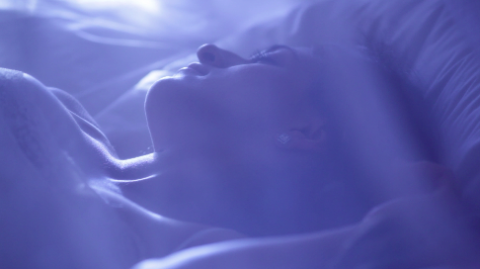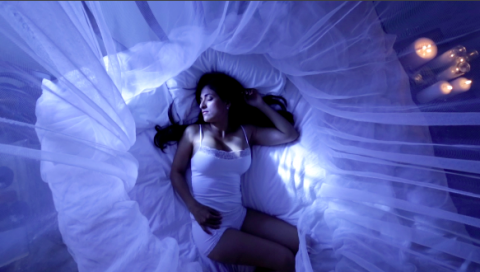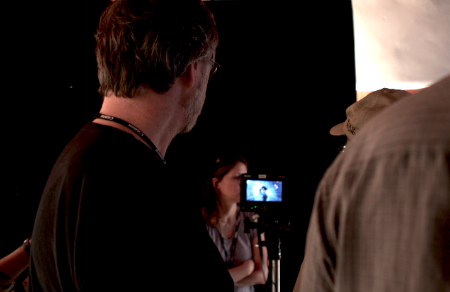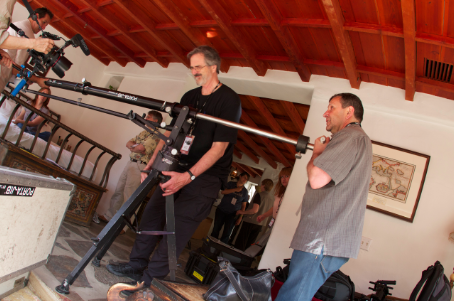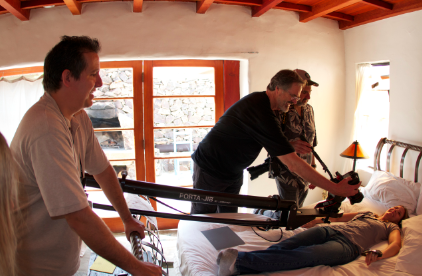If you're not able to take one of our upcoming boot camps, follow along with our exploits by signing up for our email newsletter, "Filmmaker's Notebook." Text CANONBOOTCAMP to 22828 to access our signup link on your mobile phone.

If you're not able to take one of our upcoming boot camps, follow along with our exploits by signing up for our email newsletter, "Filmmaker's Notebook." Text CANONBOOTCAMP to 22828 to access our signup link on your mobile phone.
Explain who he is. https://www.facebook.com/cris.judd
Link to his blog. http://web.stagram.com/n/cjudd/
If you can, interview him about why he took the class, what he got out of it and if he has any DSLR projects he can share with us. Include a video if you can.
There's a deluge of conflicting opinions about the Canon 5D Mark III. This can be baffling until you pull the string. A number of comments come from motion picture D.P.'s, who we respect a great deal, but their agenda is different from what I'd call a "Cinéma vérité" filmmaker.
What's a "Cinéma vérité" filmmaker?
Are you a Cinéma vérité filmmaker?
The definition of Cinéma vérité is (according to Wikipedia) "a style of documentary filmmaking, combining naturalistic techniques with stylized cinematic devices of editing and camerawork, staged set-ups, and the use of the camera to provoke subjects. It is also known for taking a provocative stance toward its topics."
Another definition – "A style of filmmaking characterized by realistic, typically documentary motion pictures that avoid artificiality and artistic effect and are generally made with simple equipment."
Another definition is – "a style of filmmaking that gives the impression of being unrehearsed, spontaneous, "real life" moments. It's unpolished and raw scenes give it a more "truthful" feel than a fictionalized event restaged and shot using traditional studio production methods. Usually shot on location with the lighting that exists there naturally."
The translation from the french is "cinema truth".
I would add "to see and capture scenes of what is rather than in it's lit or unlit state…for fear of losing it if you fool with it too much.
I like "unstaged" films. They have an excitement. It's the different feel you get from a Bourne identity film versus the polished, well-rehearsed James Bond films of late. Cinéma vérité has a power to it.
I am a "Cinéma vérité" filmmaker. In the world of still photography this type of work is called candid instead of being shot in a studio where everything is composed and carefully lit. I like raw, unposed truth. I love capturing it on film and always have since I saw my first
.
My grandfather raised horses. He was a cowboy. Gentle but focused. Pragmatic but passionate. My grandmother fell in love with him the first time she saw him ride in on his big white horse to the town dance in Chandler, Oklahoma.
On the other side of my family tree is Elizabeth Eaton, formerly a Murray. Though prim and proper from the well-to-do Murray’s of St. Louis, she married Frank Eaton, the famous Pistol Pete of Oklahoma State fame.
Frank wrote a book about his life in the “Old West” before Oklahoma became a state. In one episode, Frank and his friends had been captured by indians. One snuck out at night and lit out for Fort Reno to get help.
On the morning of the third day help arrived. Frank describes it this way.
“We saw a cloud of dust rising way up on the trail to the north of us….the calvary was coming.”
Then, Frank describes the the horses.
“The horses were beautiful, mostly bays but some chestnuts and sorrels, and a few blacks, but no paints or other fancy horses. A cavalry horse weighed somewhere around eleven hundred pounds while a cow pony weighed only about nine hundred.”
“When the lead soldiers got within about three to four hundred yards of them the Indians started shooting. The soldiers stopped then and the main column came on up and formed two columns with about four feet between.”
“A Medicine Man was leading the Indians to attack. He had on a war bonnet and was telling them the white man’s bullets couldn’t kill an Indian with a war bonnet on. He was going through all sorts of contortions while he told them he was making the white man’s gunpowder turn to dirt so it would not kill the Indians.”
“An officer with a straight sword, not a calvary saber, in his hand came riding down the line of soldiers. He stopped in front of one of them and pointed with his sword to the Medicine Man. The soldier raised his carbine and sighted, for just a second, then fired; and the Medicine Man pitched head-first off his pony, war bonnet and all, with a bullet clear through him.”
“The soldiers started their horses. They rode at a slow trot at first, then a faster trot, then a run. When they got within about fifty yards of the Indians they raised their guns and fired.”
“The smoke from the guns covered the line of soldiers but when they came out of that smoke and dust every man had his saber in his hand and was riding like the wind.”
“We could see their sabers glitter in the sun…they were making a saber charge.”
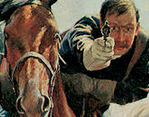
“When a calvary horse makes a charge he goes in with his nose and tail straight out and his ears back. He goes straight ahead and nothing stops him unless he is killed. If another horse gets in his way, he just runs over him.”
(left – Charles Schrevogel’s ‘Breaking Through The Line’)
“An Indian in the back broke and ran, then two or three, then fifteen or twenty. After a few minutes of fighting they all broke and ran.”
So what’s all this got to do with thee and me?
Well, today people face problems not Cheyenne Indians. But the problems can be just as life-threatening, certainly job-threatening.
Our team is like the calvary. We keep going until we find the real why that is causing the business problem. It goes like this:
I encourage you to call the calvary, if the “indians” have you surrounded.
We don’t stop until we’ve got solutions implemented and your problems on the run. We’ve solved problems in marketing, training, slow sales, lead generation, non-interruptive marketing…whatever is plaguing a company.
Email me at fletch@theassociation.tv. Better yet, call me. My cell is 818 606-3538.
- See more at: http://blog.theassociation.tv/#sthash.pO8ZJd6I.dpuf
Still photographers are the fine artists of stopping time. Cinematographers capture the flow of the dramatic dance of life. Still photographers wait for that most powerful instant as it flows past…like a gold nugget in a roaring stream, while cinematographers jump in the stream
These two worlds couldn’t be further apart, but they collide in the most delightful way at the Palm Springs Photo Festival each Spring. The part we play is trying to lure these fine artists of the frozen moment into the unpredictable, messy, out of control motion pictures. The still photographer’s work captures the audience’s eye and holds it like a dancer’s frozen pose that is mesmerizing. The cinematographer chases the tumbling of time, chasing it with shirt untucked, stumbling forward hoping to find focus.
So, what have I been smokin’?
Actually the above thoughts come from the remarkable bliss I get when teaching still photographers to film motion pictures. The worlds couldn’t be further apart. Everything in the still world is about holding things still, even the vocabulary. The still photographer yells, “Hold it!”. The cinematographer yells, “Action!”
The still photographer has a tripod with three knobs to hold the camera absolutely motionless. The motion picture photographer has a fluid head tripod, capable of panning and tilting during the shot. Egads! You’re letting time do what it wants. You need to freeze that instant, not chase it.
And there’s more bliss. My still photographer/filmmakers bring the beautiful fine art of lighting to the motion world. In motion pictures, because everything is moving, arranging lighting for subtle nuances is difficult. Still photographers bring a worship of high resolution, and texture, and “wrap” and all the fine elements of great still photography to the sloppy world of motion pictures. I tell my filmmakers that they are the Rembrandts of imagery and cinematographers are like the drywall crew you hire to get it done in a day.
Yet the art of each world blends in a marvelous hybrid sauce that is surprisingly refreshing to all who attend. We loosen still photographers up with the jib arm.
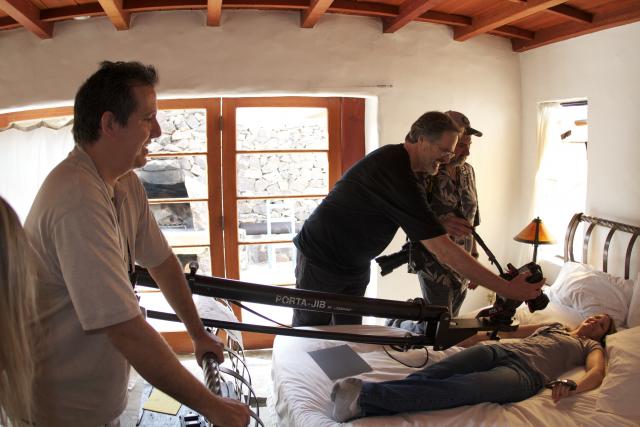
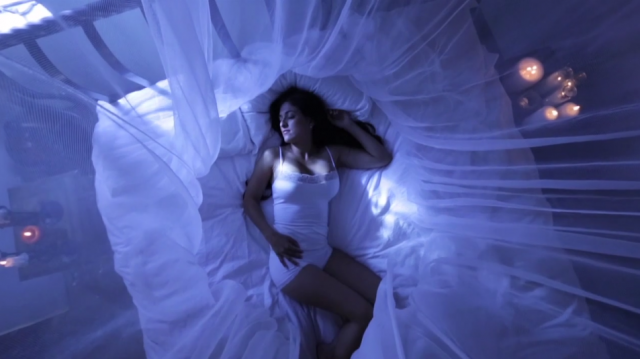
Then, with blue gels on the window, we create chilly illusions amidst the warm reality of Jeff Dunas’ Palm Springs Photo Festival – a day for night shot….
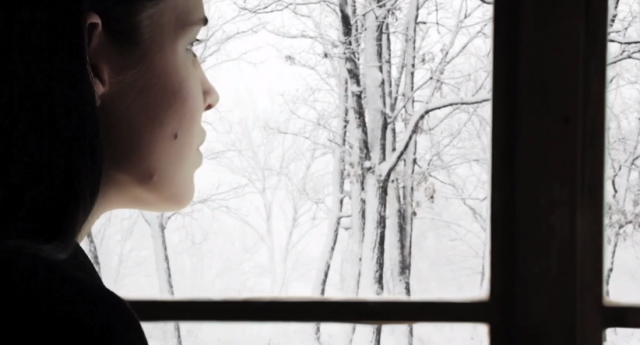
Or put up a green screen to fake that in a blizzard in Russia, even though it’s 102 outside.

or take still camera housings into Korakia’s pools for this bubbly blue epiphany.
So for five days, we escort still photographers from the world of “holding it” into the world of sloppy motion and blurry images that smear into each other in a chase that recreates the livingness of life. We get them moving around like that delightful scene in ‘Forrest Gump’ where he dances for Elvis. We get them into the world of motion…not freezing it, but riding it. We get their hips swaying. We get their shoulders down and relaxed. We loosen their grip on their camera. We let them exhale as they shoot.
It’s the most delightful party because we separate the boundaries of two distinct worlds and let them flow together. It’s like we’re cooking up hybrid images that are like blending two cuisines to create a third….crepes with bits of kale, shredded lemon peel and cinammon sugar…or chocolate crusted with rock salt. For the underwater shot we used a housing designed for still photographers, but usable for video on the Canon 5D Mk III because you can reassign the buttons on the camera.
The drills we do (to lift the still photographer into motion) move them out of their comfort zone (the world of isnesses) into the world of fluid motion. One drill asks them to take a still photograph and then storyboard out in the mind what happened just before that moment and what happened after that moment. Then, we have them take that storyboarded sequence and change it so it ends tragically, then have it end humorously. Slowly they crack loose from the “plaster paris’ world of stillness to the roller coaster of sequence.
It is so charming to witness. Imagine bringing together great chefs and asking them to blend something they’ve never tried before. That’s what it’s like. I hope you join Jeff and I for the fun. And if you drift off to the “How to Light Nudes” class*, je comprends.
*At the 2012 Palm Springs Photo Festival, Fletch found a number of students who’d signed up for his class sliding next door to brush up on the skill of how to light a 5′ 11″ nude model. The 2014 Palm Springs Photo Festival is April 27 – May 2. Here is the link
http://2014.palmspringsphotofestival.com/
- See more at: http://blog.theassociation.tv/#sthash.pO8ZJd6I.dpuf
If you’ve even been in a movie theater and heard the screaming that erupts with an out of focus picture on the screen you’ll know that being out of focus is the most objectionable thing to the audience. And it’s something that is the nemesis of the filmmaker. You’ve got a great performance and you look at the monitor and it’s out of focus and you just want to KILL. Well, those days are over for those who are okay shooting on Canon’s Super 35-sized 70D.
Being out of focus is the big career-ending flaw for a cinematographer. Canon has taken a huge leap forward by enabling the 70D to find and track focus for you. For my tests it was spot on 9 out of ten times. Not only are there three main focusing choices. Canon also allows you to fine-tune these Auto Focus functions with three Custom Function AF settings – Tracking Sensitivity, Acceleration/declaration tracking, and how much you want the Autofocus to continue to try to find focus or would you rather it stop searching in tricky settings.
Also, the Autofocus during filming opens the door to something the DSLRs haven’t been able to do since Canon quit making most of their lenses capable of holding focus (ParFocal) throughout the zoom. Now you can actually zoom on a shot and hold focus all the way in. Coincidentally, there is a product from Alzo “Smoothy Zoom-Focus Assist” which you can apply to the zoom ring of your Canon lens and achieve a pretty acceptable zoom if you’re steady on a tripod. Or if you’re going to dissolve out before the zoom stumbles to a stop (you have to be REALLY good to smoothly come to a stop) you can shoot it handheld. For $14. you can order two Smoothies. If you have a decent lens you can pull off a nice zoom with it. Here’s the link.
http://www.alzovideo.com/alzo-dslr-rig-accessory-smoothy-zoom-focus-assist.htm
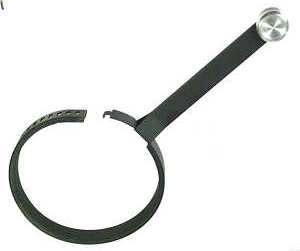
I did test the AutoFocusing, using both Canon’s STM (step motor) EFS 28 -135mm lens, and my own EF 70-200mm f/2.8L IS II USM. I’m happy to report that focusing took just under a second. Only twice did it rack focus back and forth to “find focus”. That was in situations of a white bowl in front of a white wall with no definite edge. But if there was anything in the shot that had an edge and a little contrast Canon’s AutoFocus would nail it without rolling back and forth and back and forth.
I also did tests in the heat of battle on a location shoot at Christmas filming a woman delivering presents to children whose parents wouldn’t be with them at Christmas. You know how fast kids move around. Hard to find focus. But all I had to do was tap where the child came to a stop, then tap again when he moved, then tap when his mom spoke and tap when the spokesperson spoke. It was a dream. (This video will soon be posted).
This ease and accuracy of focus was only a half second slower than the best focus puller I’ve worked with. It was certainly better than when I pull focus when I’m handheld and I’m rolling film. In those situations, I find myself passing through the focus spot at least once before I come back to find the best focus spot.
So, all I need now is the 5D Mark IV to have this Auto Focus feature (and the fold out display) and it will be the best Christmas gift a filmmaker could ask for.
- See more at: http://blog.theassociation.tv/#sthash.pO8ZJd6I.dpuf
People often think great lighting is difficult. But when we look at the work of Roger Deakins, BSC, ASC, we see how a master achieves powerful effects with the simplest of lighting. Actually, Deakins “UN-lights” his scenes and this give the image greater impact.
In the Cohen Brothers’ film ‘The Man Who Wasn’t There’, you see scenes of incredible lighting impact achieved with simple set ups. Again and again Deakins shows he totally understands great lighting, composition and an interesting subject.

We strive to emulate Deakins’ work in our ‘Lighting Like the Masters’ cinebootcamps. The scene below is the especially pleasing set up we discovered while trying out the Alzo PAN-L lights. It is soft, direct and just the right intensity. We copied the master. Looks nice.
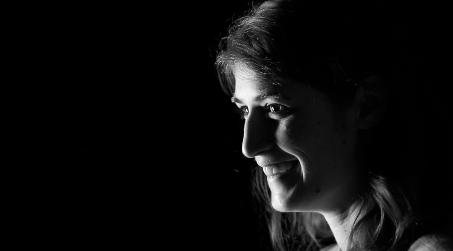
We plan more ‘Lighting Like the Masters’ workshops. Email me for the dates.
fletch@theassociation.tv
- See more at: http://blog.theassociation.tv/#sthash.pO8ZJd6I.dpuf
Filmmakers Notebook: Moonlight Bedroom: Day for Night
The Shot on the STORYBOARD: Shot of a woman sleeping peacefully, lit by the moonlight.LOCATION: ‘The Orchard House’ at Palm Spring’s sensually exotic Korakia Penzione .We couldn’t have asked for a better setting. Nina and Jeff of the Palm Springs Photo Festival reserved the best setting for our shoot day. Jeff Dunas, the Director of the Palm Springs Photo Festival, graciously invited us to deliver the Canon Boot Camp as a workshop of the Palm Springs Photo Festival.CHALLENGE: Our location was built in 1928 by Scottish Painter, Gordon Coutts, and there is minimal electrical wiring to run our lights. So rather than crank up the generator and run cable everywhere we decide to put the Mark III and Mark II to the test. Question: Are they sensitive enough to light that if we blam sunlight off a shiny board through a 2 foot by 4 foot window to bathe the actress and the room in “fake” moonlight?WHAT HAPPENED: We were training a crew of mostly professional still photographers in how to use the 5D Mark II and Mark III. Plus we had some pro video directors of photography wanting to up their game. Both were eager to learn how to shoot movies with their 5Ds. I decided to shoot two angles of the moonlight bedroom scene. One low angle through the mosquito netting with a 70-200mm lens. (see pic A). No problem. Looked great.The jib arm shot was a little more worrisome. How would we hold focus up through the jib shot. Using our pCAM app we calculated the depth of field of the shot from 20″ to six feet over the actress’ head and we saw with a 24mm lens at f 5.6 we could hold focus the whole way. So we held focus all the way through the rise up. (see pic B). Normally we would have put a 7D on the jib arm to get slow motion, but with the new Mark III we could shoot with at 60 fps. Shooting slomo made the shot more elegant and smoothed out any twitches in the move.LIGHTING – The “moonlight” was a blast of sunlight coming off a shiny board outside the bedroom. To further enhance the blue moonlight we dialed the white balance down to 2500 Kelvin. ISO was at 1250.A fan placed just off axis gently wafted the gauzy netting.RESULTThe shots looked great. (Pic E) Just one light source. Totally believable. The class was very pleased and had something good to put on their reel.NOTE: DANGER of JIBSOur Canon 5D Mark III was on a jib arm above the actress on the bed. This is dangerous, by the way. Jibs are dangerous. There is way too much weight up top. People try to scoot them over a bit and find the whole apparatus tips and crashes to the floor. I’ve seen it happen twice. So always have two people on either end of the arm and a third person to position the tripod base. (see pic C & D) It’s best to find where the camera needs to be to get the shot and then build and position the jib to that position. If you have to move the assembled jib, have the actress clear away. Have a calm person on either end. Shoelaces tied. A third person in the middle wrangles the tripod base and keeps it from tipping over. Move slowly. Please be careful. Walk twice as slow as you normally do.So, hats off to our Canon Boot Camp class and the Palm Springs Photo Festival. Our crew of Tom Myrdahl, Celine and Nancy guided our students through the setups, lighting and media management steps. Directing them was a true pleasure and we did 19 setups in their first day filming with the 5D. We wanted them to experience production but not at the expense of learning. So we took our time and answered all their questions as they grooved in their new-found skills. We can’t wait to see their work when they pick up experience.In the next Filmmakers Notebook we’ll show how we lit the copper bathtub scene.All the best,
Fletcher Murray
http://www.theassociation.tv
An Award-winning, Full Service Marketing Group
Research/Branding/Videos/DRTV/AdWords/SEO
135 N. Screenland Drive
Burbank, Ca 91505
818 841-9660
